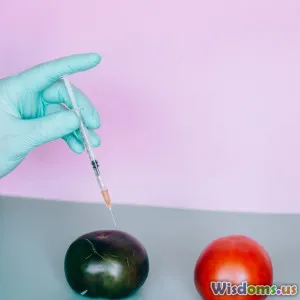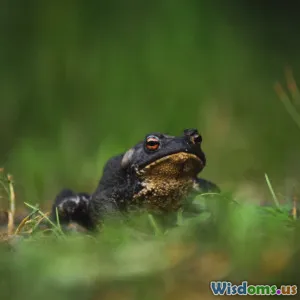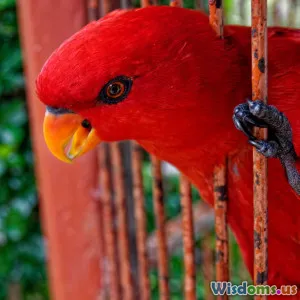
How Altruism Exists Among Vampire Bats: Sharing Blood for Survival
8 min read Explore how vampire bats showcase altruism by sharing blood meals to ensure group survival in harsh conditions. (0 Reviews)
How Altruism Exists Among Vampire Bats: Sharing Blood for Survival
Introduction
Imagine living in a world where your very survival each night hinges on the generosity of your neighbors. This isn’t a human parable – it’s the startling reality for vampire bats. These nocturnal creatures, often misunderstood as mere parasites, reveal a heartwarming story of altruism and cooperative survival. In the dark caves and forests where vampire bats reside, a fascinating behavior emerges: they share precious blood meals with their fellow bats, sometimes risking their own survival ensuring others do not starve.
This extraordinary act challenges traditional perceptions of nature as solely ruthless competition. Instead, vampire bats exemplify how cooperation and empathy can arise even in the animal kingdom’s harshest environments. This article dives deep into the phenomenon of blood sharing among vampire bats, exploring the biological mechanisms, social dynamics, and evolutionary implications behind this remarkable form of altruism.
The Biology of Vampire Bats: A Brief Overview
Vampire bats (family Phyllostomidae, genus Desmodus) are specialized mammals found primarily in Central and South America. Unlike other bats, vampire bats exclusively feed on blood, or hematophagy, to sustain their energetic needs. Their preferred prey includes livestock such as cows, horses, and sometimes even birds.
Specialized Feeding Adaptations
-
Heat sensors: Vampire bats can detect blood flow close to the surface of their prey’s skin, thanks to specialized infrared sensors.
-
Sharp teeth: Their incisors act like tiny razors, creating small incisions on the skin.
-
Anticoagulants: Their saliva contains enzymes preventing blood from clotting, allowing them to lap the flowing blood easily.
Despite these adaptations, finding enough blood each night is challenging. A single feeding might yield just 20 milliliters of blood, barely enough for their energy needs.
Survival Challenges
Missing a night’s meal can have dire consequences. Vampire bats have high metabolic rates and low fat stores, meaning they risk starvation quickly. It’s estimated that if a vampire bat donates blood and fails to feed the next night, it might not survive.
The Phenomenon of Blood Sharing: An Act of Altruism
Studies observing vampire bat colonies since the 1960s have documented a stunning behavior: bats that have successfully fed often regurgitate blood to share with others who failed to find food. This transfer occurs mouth-to-mouth, much like humans share food.
How Does Blood Sharing Work?
-
Criteria for Sharing: Bats typically share blood with close colony members, often relatives or frequent roost-mates, based on prior social bonds.
-
Regurgitation Process: After feeding, a donor bat will spit up previously ingested blood to a hungry recipient.
-
Selective Generosity: Sharing is not indiscriminate. Donors prioritize those who have shared with them before or who share kinship ties.
Examples and Observations
A seminal 2011 study by Gerald Wilkinson and colleagues in Proceedings of the Royal Society B showed that vampire bats share blood preferentially with bats that have previously regurgitated for them, highlighting a reciprocal altruism mechanism.
Another fascinating fact: in captivity, pairs of bats preferentially share blood with familiar individuals rather than strangers, indicating social memory plays a key role.
Evolutionary Advantages and Social Dynamics
Why would nature support and encourage such seemingly risky generosity?
Kin Selection and Inclusive Fitness
Helping close relatives survive indirectly propagates the donor’s genes. Blood sharing often occurs among family units, enabling what evolutionary biologists term “inclusive fitness,” where cooperation boosts reproductive success of genetically similar others.
Reciprocal Altruism: The 'You Scratch My Back' Principle
Non-kin sharing is explained by reciprocal altruism — bats share blood with the expectation of future reciprocation. This adds stability within the colony, creating a safety net much like social insurance.
Social Bonds and Grooming
Blood sharing is often coupled with grooming behaviors, forging tight social bonds. Strengthened relationships among bats promote colony cohesion and mutual support beyond immediate survival needs.
Risk and Cost-Benefit Analysis
From an evolutionary perspective, the risk of donating blood is outweighed by long-term survival benefits. Sharing ensures that the resolver of deficits today can repay the favor tomorrow, enhancing overall colony resilience.
Real-World Insights and Implications
Blood sharing behaviors among vampire bats illuminate broader themes in evolutionary biology, behavioral ecology, and even ethics.
Understanding Cooperation in Nature
Their example overturns the simplistic view of ‘survival of the fittest’ as purely competitive. Cooperative behaviors, even involving costly donations, can evolve through finely balanced social mechanisms.
Lessons for Human Societies
Though framed in biological instincts, vampire bats’ generosity invites reflection on human social support systems: sharing resources in times of scarcity sustains communities and fosters resilience.
Conservation Considerations
Vampire bats’ social complexity underlines the importance of conserving their natural habitats. Disrupting colonies impairs intricate social networks, potentially leading to population declines.
Conclusion
Vampire bats, often typecast as dark and lonely creatures of the night, reveal an astonishing narrative of altruism and interdependence. Their unique adaptation of blood sharing is a tangible demonstration of empathy coded naturally by evolution — not mere folklore but real, quantifiable cooperation that raises the survival odds for the entire group.
This phenomenon challenges our notions of selfishness in nature, highlighting that generosity and social bonds can be powerful forces in evolutionary success. As we expand our understanding of such behaviors, vampire bats stand as natural ambassadors teaching us about the profound power of sharing in the struggle for life.
In a world growing increasingly interconnected and yet divided, the vampire bats’ nightly ritual offers an inspiring biological lesson: even the smallest acts of kindness can mean the difference between life and death.
Rate the Post
User Reviews
Popular Posts




















